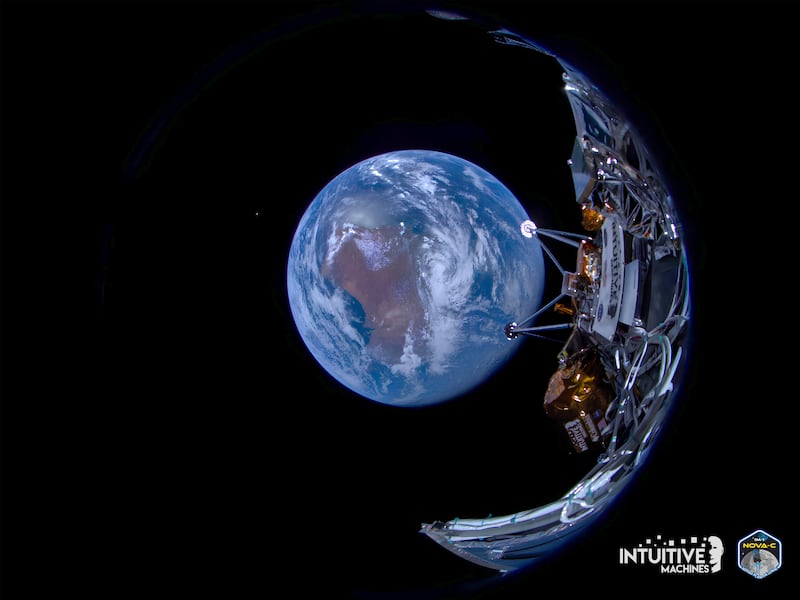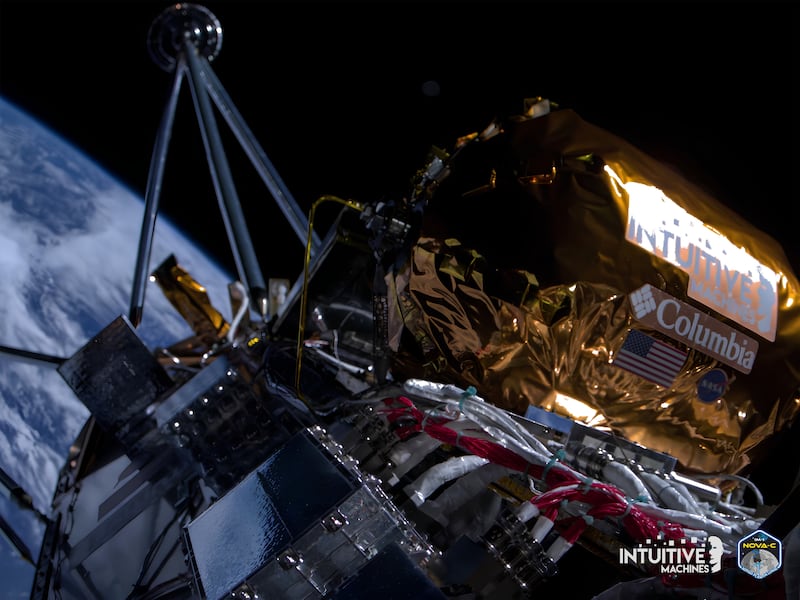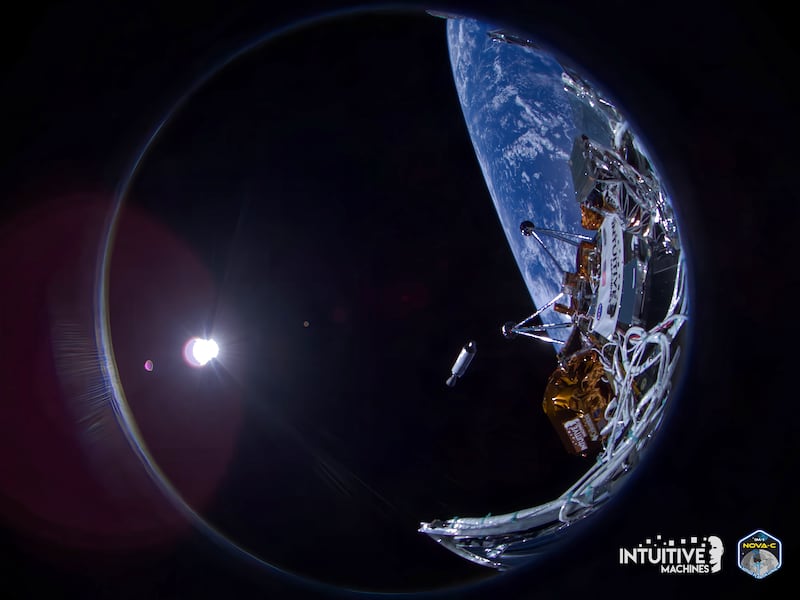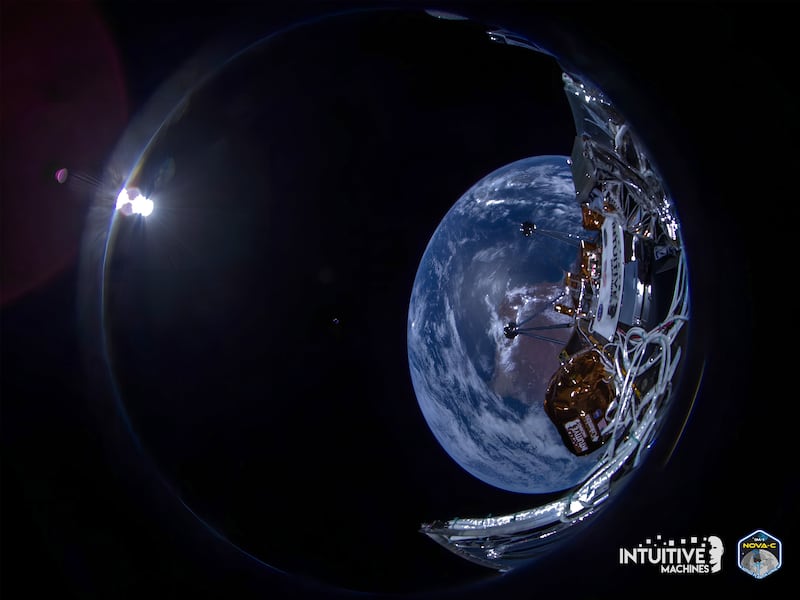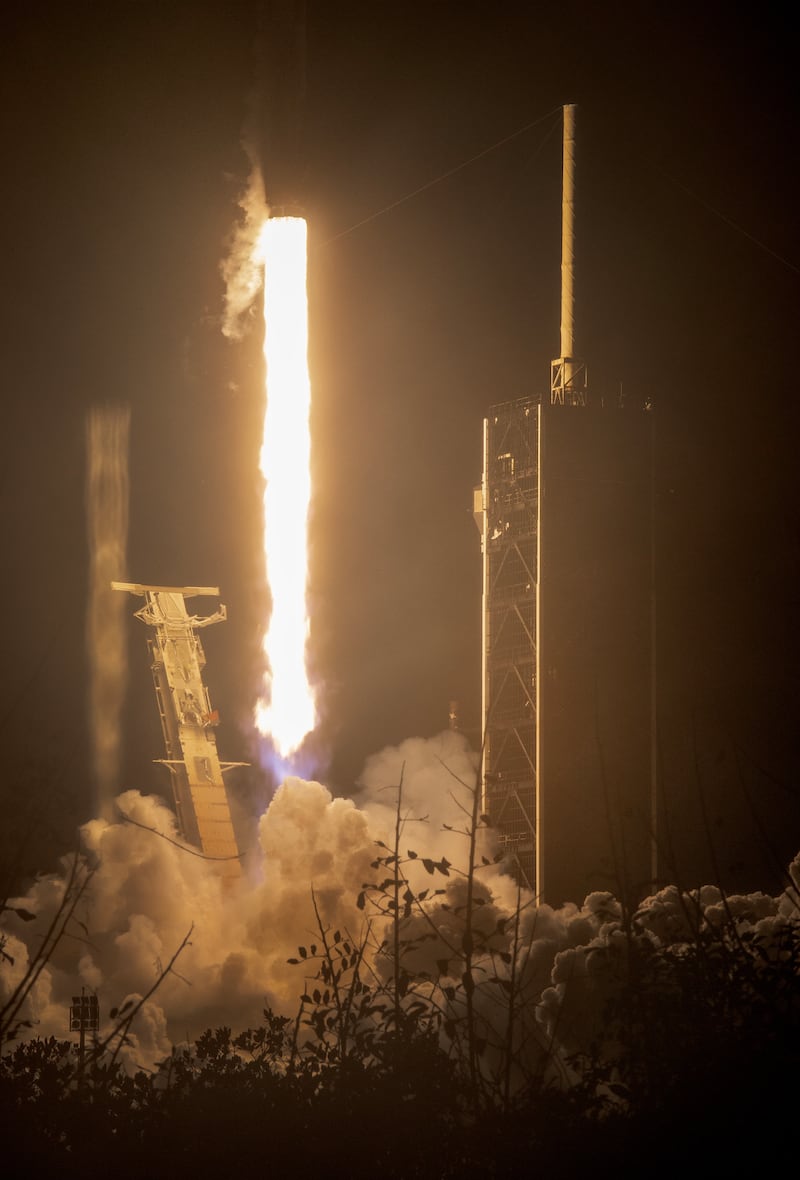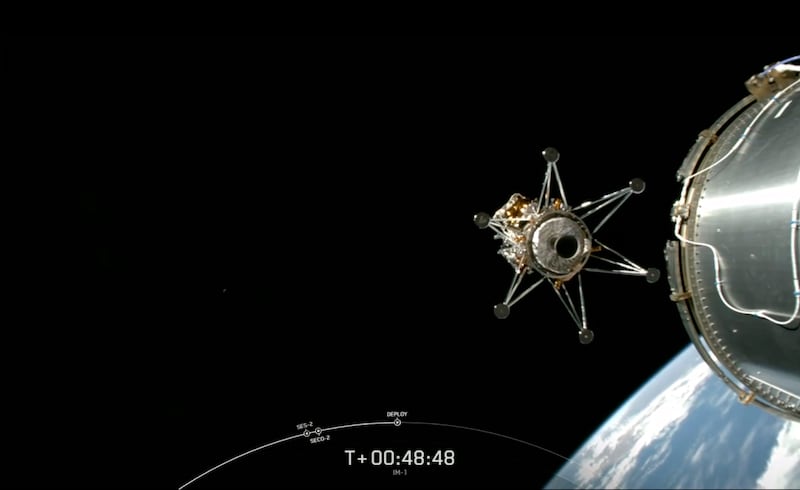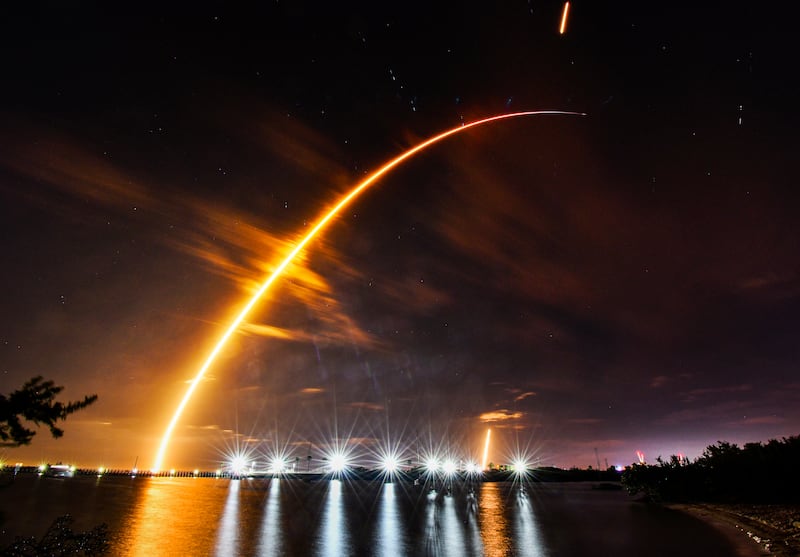The historic US Moon landing on Friday morning brought scenes similar to a Hollywood thriller, when the Odysseus spacecraft's navigation systems stopped working about two hours before the expected touchdown.
The unmanned robotic lander's rangefinders, the navigation lasers and camera, are crucial in the landing process because they allow it to detect exactly where it is by taking images of the lunar surface and avoiding hazards such as boulders.
But after they failed, Intuitive Machines, the team that built the lander, decided to switch to Nasa technology to save the mission.
“Today, flight controllers chose to exercise an additional orbit, before starting the IM-1 mission landing sequence,” an announcer said in a live-stream.
“This decision brought us to now, projecting a landing time of 17.24 CT [3.24am UAE time]. Intuitive Machines made the decision to reassign the primary navigation sensors from Odysseus's laser range finding system to use the sensors on Nasa's Navigation Doppler LIDAR.”
Nasa paid about $118 million to Houston-based company Intuitive Machines to carry six of its payloads to the lunar surface.
Although the US space agency's navigation system was on board, it was not intended for use on the privately owned spacecraft.
Nasa's engineers were only supposed to use the LIDAR system as an experimental technology for future Moon missions – but it ended up playing a crucial role in saving Friday's entire mission.
But the IM-1 mission's flight controllers used two lasers from Nasa's LIDAR payload as an alternative means to navigate during the 11-minute powered descent to the lunar surface.
More drama unfolded after the landing, when mission control was only able to secure a weak signal from the vehicle, making it unclear what condition Odysseus was in.
“We're not dead yet,” mission director Tim Crain said, about 12 minutes after touchdown.
It was not until three hours after the landing that Intuitive Machines confirmed Odysseus was sending data.
“After troubleshooting communications, flight controllers have confirmed Odysseus is upright and starting to send data,” the company said.
“Right now, we are working to downlink the first images from the lunar surface.”
The US space agency contracted the company to deliver its cargo to the Moon as part of its Commercial Lunar Payload Services programme.
The project is meant to support lunar operating companies by creating easier access to the Moon.
Nasa also sent its payloads on Astrobotic's failed Peregrine vehicle lunar mission earlier this year.
The craft experienced a propulsion anomaly shortly after separating from the rocket, causing a fuel leak that made a lunar landing impossible.
Intuitive Machines became the first company to land a private mission on the lunar surface.
It was also the first American vehicle to land on the Moon since the last Apollo mission in 1972.
Nasa administrator Bill Nelson congratulated the company on the milestone feat.
“Today for the first time in more than a half century, the US has returned to the Moon,” he said.
“Today for the first time in the history of humanity, a commercial company and American company launched and led the voyage up there.
“Congratulations to everyone involved in this great and daring quest at Intuitive Machines, SpaceX and right here at Nasa. What a triumph. Odysseus has taken the Moon.”
Intuitive Machines joins an exclusive club of organisations that have landed on the Moon, including space agencies from the US, former Soviet Union, China, India and Japan.
